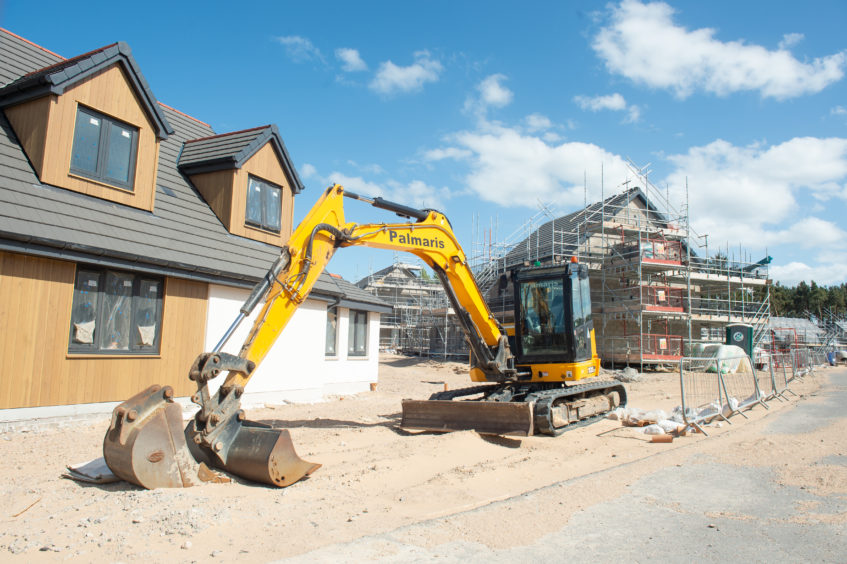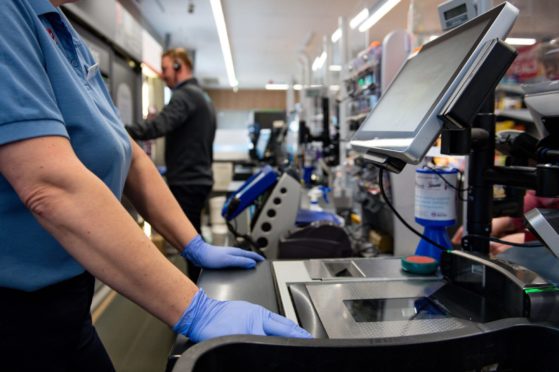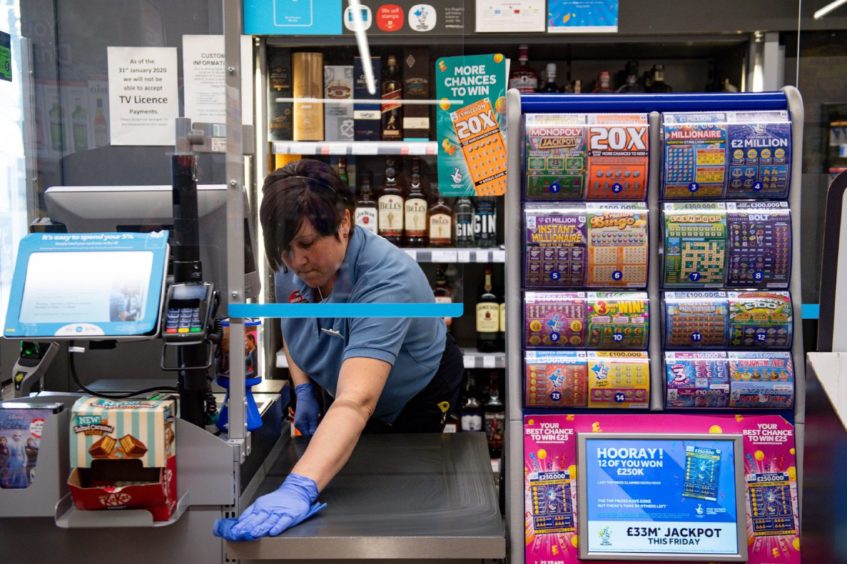The Scottish Government has produced guidelines to assist businesses in key industries for reopening after lockdown.
Here are some of the important aspects contained in each of the documents, although they are subject to change.
Retail sector
The Scottish Government’s route map states that in phase two previously closed small retail units can open with physical distancing.
The government advises that retail establishments should open no more than 800m squared of their sales area. This would permit larger retail outlets to reopen part of their sales area in phase two.
Many of the following guidance also applies to the others sectors.
Assessing risk
Under the guidance for assessing risk, the government states that “as a minimum we expect” the following to be carried out:
- Planning for a restart to be a joint effort between employers and employees with both parties fully contributing as part of an ongoing commitment to work together in ensuring a safe workplace.
- A risk-based approach should be followed to protect health and safety of employees and ensure the longer-term economic viability of the business, safe working practices being essential to ensure businesses can effectively restart and trade through the recovery phase.
Workforce planning
As a minimum, the government expects:
- Working from home to continue, where possible. It is recognised that this is not going to be possible for many retail employees but where it is possible for back office/management functions this should be undertaken.
- Health factors to be considered in any phasing of who returns to work, with employees living in vulnerable or shielded households only expected to return when new safe working environment measures have been fully tested and a return to onsite work is consistent with individual medical advice.
- New retailing arrangements should be tested and modified in agreement between employers and employees, including by phasing where possible. Employers should be aware of other regulatory compliance measures and any impacts.
- Employers to also take account of travel to work considerations in phasing a restart.
- Employers to take account of childcare arrangements, in the case of nurseries and schools not being fully operational.
Implementation timetable
An implementation timetable should be undertaken, structured broadly as follows:
- Planning: Undertake an analysis to ensure you understand where the risks are to your business in being able to restart, in particular taking into account the challenges of maintaining physical distancing, and enabling hand washing, and fair work principles and is designed to enable a restart that allows the business to trade while protecting health and well-being.
- Preparation: Produce a restart plan that incorporates your physical distancing and hygiene solutions and identifies what work is required to be carried out before a restart – screens, one-way systems, two-metre zones, staff room, PPE provision, hand sanitisers etc. Then briefings and inductions into the new ways of working. These all take time and require resourcing and commitment. You should also think about what customer communication and displays will be needed to ensure customers are able to comply with your requirements. Your preparation should also include what actions you will take if customers do not comply with your requirements.
- Pilots: Experience confirms the value of trialling the new way of working before a fuller restart is attempted, so a limited-scale pilot to test systems, find weaknesses and make improvements before a fuller restart is essential. Pilots could include messaging to the public advising them that returning to a pre-Covid retail experience will take time.
Deliveries and distribution
As a minimum, the government expects companies to:
- Provide early clarity to their supply chain about the honouring of orders in the system, linked to new production capacity and consumer demand/contracts.
- Treat all visitors including suppliers and delivery drivers, as if they were employees, ensuring they are offered the same protections and are expected to follow the same rules.
Operational guide for managing deliveries and supply
- Revise pick-up and drop-off collection points, procedures, signage and markings. For example, asking customers who are picking up online orders to open the boot of their car, so workers can load the goods to avoid unnecessary contact between employees and customers.
- Order larger quantities of goods to reduce the number of deliveries where possible and have solitary employees unload vehicles or, if not possible, keep employees in consistent pairs or groups.
- Enable delivery drivers to access welfare facilities when required, consistent with other guidance.
- Encourage drivers to stay in their vehicles where this does not compromise their safety and existing safe working practice.
- Create one-way flow of traffic in stockrooms.
Training and compliance
As a minimum, the government expects:
- Training around processes and working environment expectations should be essential for all staff before restarting work.
- Companies to establish measures, agreed with employees, to monitor compliance with relevant regulations and processes put in place to enable a safe return to production.
Construction sector

The Scottish Government’s route map states that in phase one it is planning for the construction sector to implement the first two phases in its restart plan (planning and pre-start site preparations) with a decision to move to phase two of the construction sector’s plan (soft re-start) only after consulting with government to ensure it is safe to do so and in line with public health advice.
Non-essential services
Work on construction in the following sectors should be halted at this stage, subject to limited exceptions in relation to essential and time-critical maintenance and repairs:
- Domestic housing.
- Schools, further and higher education institutions and early years provision.
- Office buildings and other commercial properties.
- Leisure.
- Retail.
- Warehousing.
- Garages and showrooms.
- Ecclesiastical.
- Community centres.
- Non-health related civic buildings.
- Public realm – hard and soft including (but not limited to) roads, which includes footpaths, footways, cycle lanes and verges; pavements; parks; and grassy areas
justice and custodial.
Operations should be shut down safely and securely, ensuring that partially-built structures are safe, and if necessary wind- and water-tight, associated equipment is properly stored, and sites have suitable security for the duration.
Companies should put in place suitable arrangements for monitoring site security and safety, and personnel may be allowed on-site to carry out essential remedial work in line with existing contracts, or in the light of urgent work emerging.
Essential projects
Essential projects include:
- Projects to create or repurpose facilities which will be used directly in Covid-19-related activities including testing, containment, treatment, research, vaccine production, protective equipment manufacture, other key medical supplies, and other related activity, including supply chains to those projects.
- Projects to create or repurpose facilities which will be used to accommodate key workers or free-up space in facilities to be used directly in Covid-19 related activities as above.
- Projects to create or repurpose facilities and infrastructure critical to the national response to Covid-19 including food production, distribution and digital communication, where these facilities are likely to be completed and operational within six months.
- Projects which are considered essential public services or which will provide wider resilience and capacity across essential systems (eg: which strengthen security of fuel, energy and water supply and the telecoms network).
- Examples include urgent work on hospitals, transport and energy infrastructure.
Progress towards restart of non-essential operations
The government said it was developing plans to address the wider issues needed to get the industry restarted again. These include the easing of restrictions in a phased manner, following the “restart” model developed by Construction Scotland on behalf of the industry. This is a six-phase plan designed to support a gradual return to work, when the medical evidence supports that:
Phase 0 – Planning
Phase 1 – Covid-19 pre-start site preparation.
Phase 2 – Soft start (only where physical distancing can be maintained).
Phase 3 – Steady state (only where physical distancing can be maintained).
Phase 4 – Steady state (where physical distancing can be maintained and/or with PPE).
Phase 5 – Increasing density/productivity.
Manufacturing sector

Under the route map, non-essential manufacturing is expected to resume from phase two with preparatory work for ensuring physical distancing and enhanced hygiene measures able to take place during phase one.
The guidance for risk assessments, workforce planning rules, implementation timetables, delivery and distribution arrangements and training schedules is broadly similar to those set out above for the retail sector.
It states: “Manufacturing is vital to the Scottish economy, accounting for over 180,000 jobs and contributing over half of Scottish exports and business expenditure on research and development.
“The work of Scotland’s manufacturers and their workforces that are, and have been, involved in supporting essential sectors throughout this Covid-19 crises demonstrates the sector’s innovation, skills and expertise.
“Manufacturing’s commitment to keeping the country running is hugely appreciated, with particular praise due to companies who have scaled-up or repurposed to manufacture vital supplies for the health sector.
“We want a strong manufacturing sector to help drive Scotland’s economic recovery and future prosperity.
“Companies should therefore use this guidance to look forward and engage with trade union or workforce representatives to develop workplace-specific plans for a managed transition away from current restrictions, allowing sufficient time for that joint work.”













